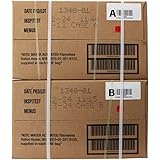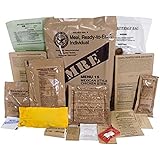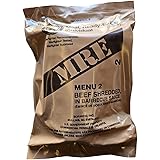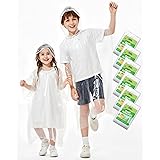Water is one of our most essential resources, and keeping it clean and safe is crucial not just for our health, but for the environment as well. From my own experiences in various communities, I’ve seen how devastating water contamination can be. So, let me share with you the best ways I’ve found to prevent this! I’ve broken it down into five key areas that really make a difference.
Understanding Water Sources
First things first: you gotta know where your water is coming from. Knowing your water sources is step one in protecting them. This foundation is super crucial for prevention.
Identify Your Water Source
Here’s the deal – whether you’re using well water, municipal supply, or rainwater harvesting, each source has its unique challenges. I remember when I moved to a rural area and had to rely on a well. There were all sorts of factors to dive into. Checking where your water is sourced from will help you assess potential risks.
Once you know your source, it’s easier to figure out how to protect it. Investigate whether your area has a history of contamination. You’d be surprised at how many people overlook this crucial piece of information!
Don’t forget to talk to your water provider if you’re on a municipal system. Getting water quality reports from them can unveil a lot about what’s going on in your local water supply.
Understand Local Regulations
Researching local regulations can be an eye-opener. Some areas have specific guidelines on how water sources should be managed to prevent contamination. I found it helpful to attend community meetings or check local government websites for updates. Get involved; after all, this is about your health!
Knowing the rules also gives you insight into how your community approaches water safety. If you see any weak spots or gaps in regulation, don’t hesitate to voice your concerns.
Plus, understanding regulations not only protects you but helps you warn your neighbors, turning this into a community effort. Water safety for the win!
== > What if ... Get a FREE Subscription to PREPARE
Monitor Changes in Your Source
Water doesn’t magically stay the same; it can change due to construction, climate, or agricultural runoff. Keeping an eye on how your source changes over time is smart! For instance, when I noticed increased construction in my area, I started doing more frequent water tests just to stay safe.
If you notice any shifts like strange tastes, cloudiness, or smells, don’t hesitate. Take action and investigate! Knowing the normal state of your water helps you identify when something’s off.
Remember, when it comes to prevention, being proactive is key. If you can anticipate problems before they arise, you’ll save yourself and your loved ones a heap of trouble down the line.
Maintain Your Plumbing Systems
Next up, let’s talk plumbing. This may not sound exciting, but trust me, keeping your plumbing in good shape plays a pivotal role in preventing water contamination.
Regular Inspections
As a homeowner, I learned the hard way about the importance of checking for leaks and corrosion in pipes. You’d be shocked at how a tiny leak can lead to bigger issues. Regular inspections can catch those leaks before they cause trouble.
It can be as simple as checking your visible pipes regularly. Any signs of wear and tear, discoloration, or moisture can signal that something’s up. Don’t ignore it!
If you’re not comfortable doing it yourself, consider hiring a professional. It’s worth the investment to ensure everything’s working as it should.
Upgrade Old Fixtures
If your home still has aging plumbing, you might want to consider upgrades. Not only do new fixtures improve water quality, but they’re also often designed to minimize leaks. I swapped out some rusty faucets that were likely leaching lead – it was one of the best decisions I made!
Installing water filters can also be a game changer. They can drastically improve the quality of water you’re actually drinking.
Just take the time to do some research or consult a plumber about the best options for your home. It’s a small step that makes a monumental difference.
Watch Your Water Usage
While it seems unrelated, conserving water not only helps the environment, but it also lowers the risk of contamination. When we use less water, it puts less strain on the local systems, which is beneficial in preventing any kind of pollution.
Set realistic goals for saving water in your daily life. Simple things like taking shorter showers, fixing leaks, or even turning off the tap while brushing your teeth can have an impact.
Teach your family about the importance of saving water. Making it a family mission can enhance everyone’s understanding of how important clean water is.
Protecting Against Agricultural Runoff
We’re now diving into a super important area: agricultural runoff. Farming is a critical part of many communities, but it can contribute to major water contamination if not controlled correctly.
Support Sustainable Practices
Get to know local farmers and support sustainable agricultural practices when you can. I’ve learned how vital it is to encourage farmers to use organic methods and avoid harmful pesticides and fertilizers.
Participate in local farmers’ markets, or even better, chat with the farmers directly. Ask them about their techniques and encourage them to consider environmentally friendly options.
It’s all about fostering relationships in your community. The more we show support for sustainable practices, the better our water sources become.
Maintain Buffer Zones
Another interesting aspect is maintaining buffer zones around water bodies. If you have influence over local land use planning, advocate for keeping natural vegetation along streams, lakes, and rivers. These areas help filter out pollutants before they can reach the water source.
Planting trees and other native vegetation can create a natural barrier to runoff and improve overall water health. It’s a simple yet effective strategy to maintain clean water.
Also, having community clean-up days where residents rally together to clean up along local water sources can make a big impact. It builds camaraderie and gets everyone involved in protecting our water.
Get Preparedness and Self-Reliance Tips. Subscribe Now!
Educate on Chemical Use
Education plays a vital role here. It can be as simple as sharing information on the potential risks associated with using chemicals for lawn care or gardening. We all want our lawns to look great, but we have to consider the long-term effects on local water sources!
Getting the word out through workshops or community gatherings can really inform residents about the impact chemical runoff has on our water supply. When people understand the issues, they’re more likely to make conscious choices.
This kind of grassroots education really pays off in the long run, as communities come together to fight for safe water.
Reducing Waste and Pollution
An important area we shouldn’t overlook is waste management. It’s easy to think that water contamination can’t affect us personally, but pollution can easily seep into our water systems. Let me share how we can work to reduce that waste.
Proper Disposal of Chemicals
When it comes to chemicals, proper disposal is a non-negotiable. I can’t tell you how many times I’ve stumbled upon household chemicals just tossed in the trash. That’s a fast track to contaminating groundwater!
Learning about local disposal options for hazardous materials can save you, and your community, from serious headaches down the road. Most areas have designated days for this kind of collection, so be sure to participate!
Encourage friends and neighbors to do the same. Sharing knowledge about proper chemical disposal can create a ripple effect with lasting impacts.
Reduce Plastic Waste
Plastic waste is another significant contributor to pollution. I’ve changed my routine to use reusable bags, bottles, and containers, and it feels pretty darn good. Every little bit counts when reducing plastic usage.
The less plastic waste we create, the less chance of it ending up in waterways and causing harm. Adopt a zero-waste lifestyle and lead by example. You may inspire others to join the cause!
Plus, community clean-up days can focus on collecting plastic waste, making it a fun and engaging event. Every piece of plastic removed is a step toward cleaner water!
Advocate for Better Waste Management Policies
Finally, advocacy for better waste management policies can go a long way. Attend local government meetings and express the importance of efficient waste management practices. Together, we can influence how our waste is handled.
Campaign for clean water initiatives or partner up with environmental groups to raise awareness. It’s all about making your voice count. You never know who might share your passion!
A collaborative approach strengthens community ties while creating a stronger voice for advocating water cleanliness.
Water Testing and Treatment
Last but not least, let’s chat about water testing and treatment. You can take matters into your own hands by ensuring the water you’re consuming is safe.
Regular Water Testing
First off, get into the practicing habit of regular water testing. I test my water every year to keep tabs on its quality. Most local health departments can point you toward affordable testing kits.
Understanding your water composition will shine a light on any unexpected contaminants. Knowledge is power, my friend!
Share your experiences with neighbors, as they might not see contamination coming until it’s too late. Regularly testing can truly empower everyone towards better water safety.
Invest in Treatment Solutions
If your water tests reveal issues, consider investing in treatment solutions! This can be anything from home filtration systems to reverse osmosis units. I’ve set up a reverse osmosis system in my home for peace of mind, and I couldn’t be happier with the results!
Take your time researching the best options for your specific situation because each solution can target different contaminants. It’s all about knowing what exactly you’re dealing with.
Additionally, getting community groups together to discuss water treatment options can provide valuable insights and experiences. You’re not alone in this – sharing makes us all stronger!
Stay Informed About Water Issues
Finally, keep yourself informed about water issues that may affect your area. Subscribe to local environmental newsletters or follow community social media groups dedicated to water safety. It’s a great way to stay updated on events, discussions, and best practices.
Awareness is key. The more we know, the better our strategies will be to keep water clean and safe for everyone. It’s kind of like a never-ending process, but that’s a good thing!
Remember, being proactive today can prevent problems tomorrow, so let’s look out for our water together!
FAQ
1. What are the best sources for water testing kits?
You can find water testing kits at home improvement stores, online retailers, or you can contact your local health department for recommendations. They might even provide testing services!
2. How often should I inspect my plumbing?
It’s best to conduct plumbing inspections at least once a year. However, if you notice leaks or other issues, inspect immediately to prevent bigger problems.
3. Where can I learn more about sustainable farming practices?
Schools, agricultural extension services, and local non-profits often have resources available. You can also connect with farmers directly at markets or community events.
4. What steps can I take to support better waste management policies?
Attend local government meetings, join community clean-up days, and advocate for policy changes. The more voices advocating for change, the more likely it is to happen!
5. Why is it important to educate others about water contamination?
Education spreads awareness and encourages proactive measures in communities. When others understand the risks, they are more likely to engage in practices that protect our water supply!






